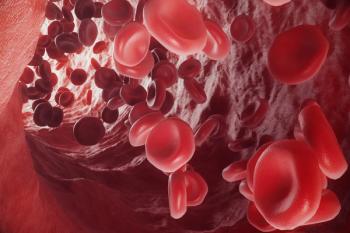
- Oncology Vol 29 No 4_Suppl_1
- Volume 29
- Issue 4_Suppl_1
(P025) T3 Tumors and Breast Conservation
For patients with tumors greater than 5 cm, survival in the Medicare population remains similar between breast conservation and mastectomy, as it does for smaller primaries. Despite the exclusion from prospective randomized trials, breast conservation should remain a standard option for women with larger tumors when deemed clinically and cosmetically amenable to resection.
Richard J. Bleicher, MD, Karen Ruth, MS, Elin R. Sigurdson, MD, PhD, Marcia Boraas, MD, Penny Anderson, MD, John M. Daly, MD, Brian L. Egleston, PhD; Fox Chase Cancer Center
INTRODUCTION: Although breast conservation remains one standard for treatment of breast cancer, tumors > 5 cm have been consistently excluded from breast conservation clinical trials. While many surgeons perform breast conservation in select patients whose tumors are T3 primaries, very few small series have compared this with mastectomy for tumors > 5 cm. This study was performed to determine if survival remains equivalent between the two surgical options, using a large national dataset.
METHODS: Surveillance, Epidemiology, and End Results (SEER)-Medicare–linked cases were identified for patients aged ≥ 66 years undergoing breast conservation who had invasive noninflammatory, nonmetastatic breast cancer between 1992 and 2009. Propensity score-based adjustment was used to account for age, gender, race, year of diagnosis, Charlson comorbidity score, Elixhauser comorbidity index, income, education, marital status, SEER registry, urban/rural setting, United States (US) location, tumor size, histology, tumor grade, number of lymph nodes examined, number of positive lymph nodes, American Joint Committee on Cancer (AJCC) stage, administration of chemotherapy, and administration of radiotherapy.â©
RESULTS: There were 5,890 patients with tumors > 5.0 cm who underwent breast surgery, with 16.1% having breast conservation and 83.9% undergoing mastectomy. Mean age of the breast conservation and mastectomy patients was 77.6 and 77.3 years, and the mean tumor size was 7.97 vs 7.51 cm, respectively. While 28.4% of stage II patients with T3 tumors had breast conservation, only 8.1% of stage III patients did so. Over 64% of breast conservation patients and 68% of mastectomy patients had ≥ 5 years of follow-up. Use of breast conservation was associated with younger age at diagnosis, race, a history of other cancers, higher income, a more rural setting, region of the country, lower Charlson comorbidity index, histology, fewer nodes examined, fewer positive nodes, lower-grade tumors, lower AJCC stage, nonuse of chemotherapy, and the use of radiotherapy. Overall survival and breast cancer–specific survival, adjusted for demographic, tumor, and treatment factors, were not different between those having breast conservation and those having mastectomy (breast cancer–specific survival: subdistribution hazard ratio [SHR] = 1.07; 95% confidence interval [CI], 0.75–1.51; P = .71; overall survival: SHR = 0.92; 95% CI, 0.75–1.13; P = .43).
CONCLUSIONS: For patients with tumors > 5 cm, survival in the Medicare population remains similar between breast conservation and mastectomy, as it does for smaller primaries. Despite the exclusion from prospective randomized trials, breast conservation should remain a standard option for women with larger tumors when deemed clinically and cosmetically amenable to resection.
Proceedings of the 97th Annual Meeting of the American Radium Society -
Articles in this issue
Newsletter
Stay up to date on recent advances in the multidisciplinary approach to cancer.


















































































